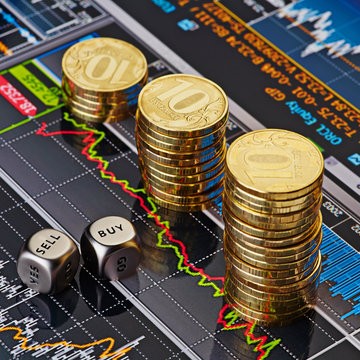
Recall_DEXの価格RECALL
JPY
未上場
¥0.0001509JPY
0.00%1D
Recall_DEX(RECALL)の価格は日本円では¥0.0001509 JPYになります。
Recall_DEXの価格チャート(JPY/RECALL)
最終更新:2025-10-21 01:22:16(UTC+0)
RECALLからJPYへの交換
RECALL
JPY
1 RECALL = 0.0001509 JPY。現在の1 Recall_DEX(RECALL)からJPYへの交換価格は0.0001509です。このレートはあくまで参考としてご活用ください。
Bitgetは、主要取引プラットフォームの中で最も低い取引手数料を提供しています。VIPレベルが高ければ高いほど、より有利なレートが適用されます。
現在のRecall_DEX価格(JPY)
現在、Recall_DEXの価格は¥0.0001509 JPYで時価総額は¥150,799.15です。Recall_DEXの価格は過去24時間で0.00%下落し、24時間の取引量は¥0.00です。RECALL/JPY(Recall_DEXからJPY)の交換レートはリアルタイムで更新されます。
1 Recall_DEXは日本円換算でいくらですか?
現在のRecall_DEX(RECALL)価格は日本円換算で¥0.0001509 JPYです。現在、1 RECALLを¥0.0001509、または66,288.08 RECALLを¥10で購入できます。過去24時間のRECALLからJPYへの最高価格は-- JPY、RECALLからJPYへの最低価格は-- JPYでした。
Recall_DEXの価格は今日上がると思いますか、下がると思いますか?
総投票数:
上昇
0
下落
0
投票データは24時間ごとに更新されます。これは、Recall_DEXの価格動向に関するコミュニティの予測を反映したものであり、投資アドバイスと見なされるべきではありません。
Recall_DEXの市場情報
価格の推移(24時間)
24時間
24時間の最低価格:¥024時間の最高価格:¥0
過去最高値(ATH):
--
価格変動率(24時間):
価格変動率(7日間):
--
価格変動率(1年):
--
時価総額順位:
--
時価総額:
¥150,799.15
完全希薄化の時価総額:
¥150,799.15
24時間取引量:
--
循環供給量:
999.62M RECALL
最大供給量:
999.62M RECALL
Recall_DEXのAI分析レポート
本日の暗号資産市場のハイライトレポートを見る
Recall_DEXの価格履歴(JPY)
Recall_DEXの価格は、この1年で--を記録しました。直近1年間のJPY建ての最高値は--で、直近1年間のJPY建ての最安値は--でした。
時間価格変動率(%) 最低価格
最低価格 最高価格
最高価格 
 最低価格
最低価格 最高価格
最高価格 
24h0.00%----
7d------
30d------
90d------
1y------
すべての期間----(--, --)--(--, --)
Recall_DEXの最高価格はいくらですか?
RECALLの過去最高値(ATH)はJPY換算で--で、に記録されました。Recall_DEXのATHと比較すると、Recall_DEXの現在価格は--下落しています。
Recall_DEXの最安価格はいくらですか?
RECALLの過去最安値(ATL)はJPY換算で--で、に記録されました。Recall_DEXのATLと比較すると、Recall_DEXの現在価格は--上昇しています。
Recall_DEXの価格予測
2026年のRECALLの価格はどうなる?
+5%の年間成長率に基づくと、Recall_DEX(RECALL)の価格は2026年には¥0.0001624に達すると予想されます。今年の予想価格に基づくと、Recall_DEXを投資して保有した場合の累積投資収益率は、2026年末には+5%に達すると予想されます。詳細については、2025年、2026年、2030〜2050年のRecall_DEX価格予測をご覧ください。2030年のRECALLの価格はどうなる?
+5%の年間成長率に基づくと、2030年にはRecall_DEX(RECALL)の価格は¥0.0001973に達すると予想されます。今年の予想価格に基づくと、Recall_DEXを投資して保有した場合の累積投資収益率は、2030年末には27.63%に到達すると予想されます。詳細については、2025年、2026年、2030〜2050年のRecall_DEX価格予測をご覧ください。
注目のキャンペーン
Recall_DEXのグローバル価格
現在、Recall_DEXは他の通貨の価値でいくらですか?最終更新:2025-10-21 01:22:16(UTC+0)
RECALL から ARS
Argentine Peso
ARS$0RECALL から CNYChinese Yuan
¥0RECALL から RUBRussian Ruble
₽0RECALL から USDUnited States Dollar
$0RECALL から EUREuro
€0RECALL から CADCanadian Dollar
C$0RECALL から PKRPakistani Rupee
₨0RECALL から SARSaudi Riyal
ر.س0RECALL から INRIndian Rupee
₹0RECALL から JPYJapanese Yen
¥0RECALL から GBPBritish Pound Sterling
£0RECALL から BRLBrazilian Real
R$0よくあるご質問
Recall_DEXの現在の価格はいくらですか?
Recall_DEXのライブ価格は¥0(RECALL/JPY)で、現在の時価総額は¥150,799.15 JPYです。Recall_DEXの価値は、暗号資産市場の24時間365日休みない動きにより、頻繁に変動します。Recall_DEXのリアルタイムでの現在価格とその履歴データは、Bitgetで閲覧可能です。
Recall_DEXの24時間取引量は?
過去24時間で、Recall_DEXの取引量は¥0.00です。
Recall_DEXの過去最高値はいくらですか?
Recall_DEX の過去最高値は--です。この過去最高値は、Recall_DEXがローンチされて以来の最高値です。
BitgetでRecall_DEXを購入できますか?
はい、Recall_DEXは現在、Bitgetの取引所で利用できます。より詳細な手順については、お役立ちrecall_dexの購入方法 ガイドをご覧ください。
Recall_DEXに投資して安定した収入を得ることはできますか?
もちろん、Bitgetは戦略的取引プラットフォームを提供し、インテリジェントな取引Botで取引を自動化し、利益を得ることができます。
Recall_DEXを最も安く購入できるのはどこですか?
戦略的取引プラットフォームがBitget取引所でご利用いただけるようになりました。Bitgetは、トレーダーが確実に利益を得られるよう、業界トップクラスの取引手数料と流動性を提供しています。
今日の暗号資産価格
暗号資産はどこで購入できますか?
動画セクション - 素早く認証を終えて、素早く取引へ

Bitgetで本人確認(KYC認証)を完了し、詐欺から身を守る方法
1. Bitgetアカウントにログインします。
2. Bitgetにまだアカウントをお持ちでない方は、アカウント作成方法のチュートリアルをご覧ください。
3. プロフィールアイコンにカーソルを合わせ、「未認証」をクリックし、「認証する」をクリックしてください。
4. 発行国または地域と身分証の種類を選択し、指示に従ってください。
5. 「モバイル認証」または「PC」をご希望に応じて選択してください。
6. 個人情報を入力し、身分証明書のコピーを提出し、自撮りで撮影してください。
7. 申請書を提出すれば、本人確認(KYC認証)は完了です。
Recall_DEXを1 JPYで購入
新規Bitgetユーザー向け6,200 USDT相当のウェルカムパック!
今すぐRecall_DEXを購入
Bitgetを介してオンラインでRecall_DEXを購入することを含む暗号資産投資は、市場リスクを伴います。Bitgetでは、簡単で便利な購入方法を提供しており、取引所で提供している各暗号資産について、ユーザーに十分な情報を提供するよう努力しています。ただし、Recall_DEXの購入によって生じる結果については、当社は責任を負いかねます。このページおよび含まれる情報は、特定の暗号資産を推奨するものではありません。
RECALLからJPYへの交換
RECALL
JPY
1 RECALL = 0.0001509 JPY。現在の1 Recall_DEX(RECALL)からJPYへの交換価格は0.0001509です。このレートはあくまで参考としてご活用ください。
Bitgetは、主要取引プラットフォームの中で最も低い取引手数料を提供しています。VIPレベルが高ければ高いほど、より有利なレートが適用されます。
Bitgetインサイト

Tpjoshua
6時
crypto market weakness could affect RECALL ($RECALL) — here are key considerations,
🔍 Broader market weakness: what’s going on
Several signals indicate the crypto market is under pressure:
The global crypto market saw a massive draw‑down of over US$800 billion as risk assets sold off broadly.
Major cryptocurrencies (e.g., Bitcoin) have corrected sharply ahead of key central‑bank policy decisions and monetary tightening.
Sentiment indices show the market in “fear” mode (low risk appetite) and capital rotating out of smaller, more speculative altcoins into perceived safer assets.
In a weak market environment, here are some generic effects you’ll commonly see:
Liquidity dries up for smaller or newer tokens → higher volatility, wider bid‑ask spreads, harder to enter/exit large positions without moving the price.
The premium for risk (i.e., the return investors demand for holding speculative tokens) rises, which means valuations get compressed.
Macro factors like interest rates, inflation, regulatory uncertainty become dominant drivers of crypto flows rather than project fundamentals.
“Risk‑off” behavior means major capital tends to stick with big, more liquid tokens (e.g., Bitcoin, Ethereum) or move into stablecoins/cash rather than chasing speculative altcoin gains.
🧩 How market weakness could impact RECALL specifically
Given what we know about RECALL, here are ways it could be affected — both the down‑sides and potential mitigations.
Down‑side risks
Speculation pull‑back: RECALL is positioned as a relatively new token (just launched in October 2025) and has had sharp early gains tied to listing and hype. In a weak market with risk aversion, the speculative premium may evaporate quickly.
Liquidity vulnerability: Although RECALL had a volume surge on listing (as of Oct 15 2025) , new tokens still tend to have higher exit risk if sentiment flips. Liquidity could contract, leading to sharper draw‑downs.
Broader altcoin drag: Even if RECALL has its own positive catalysts (like utility in the AI token niche), when the overall altcoin market is weak, many smaller tokens move down simply by virtue of being in the “risk alt” bucket. For example, one source notes that RECALL’s recent rally “defied” a weak alt market but warns it’s fragile.
Token unlock / sell pressure: RECALL has a tokenomics schedule with a large supply and unlocks over time (e.g., early investors, ecosystem allocations) which could amplify downward pressure when market sentiment is poor.
Potential mitigations / upside factors
Unique catalysts: RECALL benefits from a listing (e.g., on major exchange) and a defined utility (AI agent marketplace + staking) which can help it decouple somewhat from broad market if they deliver.
Strong narrative / niche: The AI + blockchain angle is a hot theme; if RECALL can capitalise on it and show usage, it could attract capital even during weaker market phases.
Conviction staking model: RECALL has a “conviction staking” mechanism that locks tokens for longer periods which may reduce short‑term selling pressure.
📊 Outlook summary for RECALL given market weakness
Combining the above, here is a rough outlook framework:
Short term (next few weeks to 3 months): RECALL could face headwinds due to broader market weakness. Even if it doesn’t collapse, expect elevated volatility, possible pullbacks in absence of strong news. A key risk is a retest of support levels if altcoins rotate out further.
Medium term (3 to 12 months): If RECALL executes on its utility (agent marketplace, staking, listings) it may outperform many alts — but only if the broader market stabilises or turns risk‑on. If the market remains weak, RECALL may still struggle to gain sustained upside.
Key triggers to watch:
New exchange listings or major liquidity expansions
Demonstrable user growth, AI agent economy activity on the network
Token unlock events (and whether they spark selling)
Macro signals: If crypto enters a risk‑on phase again (lower interest rates, favourable regulation) then RECALL may rally. Conversely, if monetary tightening continues, it may lag.
RECALL+2.41%

Ishque_Wafa
6時
💡 The $RECALL Trading Strategy: A New Lens on Market Opportunities
💡 The $RECALL Trading Strategy: A New Lens on Market Opportunities
In today’s rapidly evolving trading landscape, new strategies emerge almost daily — some algorithmic, others rooted in community wisdom. Among these, a name that’s recently surfaced across trading forums and social media is the $RECALL trading strategy.
While it’s not yet a mainstream concept in financial literature, its growing presence in crypto and retail trading spaces hints at a deeper idea — one that combines pattern recognition, adaptive analysis, and opportunity capture. Let’s explore what $RECALL might represent, how it connects to traditional and AI-driven models, and why traders are paying attention.
🧠 What Is the $RECALL Trading Strategy?
Unlike classic strategies like scalping, momentum, or mean reversion, the $RECALL strategy isn’t a fixed formula or historical trading framework. Instead, it appears to be an emerging concept inspired by three overlapping interpretations — community branding, quantitative logic, and market recall events.
At its core, $RECALL is about not missing opportunities — identifying the setups, reversals, or re-entries that many traders overlook. It’s built on the philosophy of “recalling” or re-engaging with high-probability trades that the market has temporarily left behind.
Depending on context, $RECALL can mean one of the following:
1️⃣ A community-developed custom strategy, branded by traders using proprietary signals or indicators.
2️⃣ A quantitative concept rooted in the recall metric of AI and machine learning models.
3️⃣ A market behavior observation, based on short-selling recalls or capital reallocation events.
Let’s break these down further. 👇
⚙️ 1. The Custom-Strategy Perspective
Across crypto groups and Discord communities, traders often build and brand their own systems — using names that stand out, like $RECALL, $PHOENIX, or $NOVA.
In this context, $RECALL might represent a pattern-based strategy that focuses on:
Capturing reversal zones after market overreactions.
Re-entering trades that align with macro-trend continuation.
Using “memory-based” signals such as RSI divergence or volume re-accumulation.
The guiding principle here is simple:
> Don’t chase the first move — recall the setup once the market confirms strength again.
This mirrors the idea of strategic patience — letting the noise fade before recalling an opportunity with stronger conviction.
📊 2. Quantitative & Machine Learning Interpretation
In the world of quantitative finance and AI-driven trading, recall has a very different — yet equally fascinating — meaning.
It’s a statistical metric used to evaluate the performance of prediction models:
> 🧮 Recall = True Positives / (True Positives + False Negatives)
A high recall score means the model captures most profitable opportunities (even if it includes some false signals). A low recall model, in contrast, misses too many valid trades.
In that sense, a “high recall” trading strategy prioritizes inclusivity — it tries not to miss any major profitable setups, even if that means tolerating more false alarms.
Applied to real-world trading:
A high-recall AI model might send multiple entry signals in a strong trend, ensuring it catches the big moves.
A low-recall model might only trigger rare but ultra-precise entries.
The balance between recall and precision becomes a core part of optimizing quant strategies. $RECALL, therefore, can symbolize this philosophical balance between opportunity and accuracy.
💹 3. Market Mechanics & Short Recall Dynamics
In traditional finance, the term recall is also used in securities lending and short selling.
When investors borrow shares to short a stock, the original lender can issue a recall notice, demanding those shares back. This forces short sellers to cover their positions early — often triggering upward price movements, or even mini short squeezes.
A “recall-based trading strategy” in this context might track:
Rising recall rates on specific tickers.
Borrow cost fluctuations.
Sudden volume surges following mass recalls.
Traders monitoring this data can gain early insight into potential bullish reversals — a phenomenon increasingly relevant in crypto perpetual markets and DeFi lending pools.
🌍 Why $RECALL Resonates With Modern Traders
The $RECALL narrative connects deeply with the mindset of today’s digital trader. In volatile markets — especially crypto — missing an opportunity can mean missing exponential returns.
$RECALL symbolizes a shift from reactive to reflective trading — not chasing pumps, but re-engaging smartly when data, trend structure, and sentiment align again.
Its appeal lies in three things:
✅ Adaptability — works across technical, AI, and macro frameworks.
✅ Philosophy — focus on patience and re-entry, not FOMO.
✅ Data Integration — merges human intuition with machine learning insights.
Whether you’re a manual chartist or a quant coder, the $RECALL concept encourages a crucial mindset: “Don’t just predict — prepare to act again.”
🧭 Final Thoughts
The $RECALL trading strategy may not yet have a formal whitepaper or standardized rulebook — but its conceptual power is undeniable.
It bridges multiple schools of thought:
From retail traders branding their intuition into structured setups,
To data scientists applying recall-precision optimization,
To market analysts studying recall events in short data flow.
In all cases, the principle remains universal: successful traders recall opportunities that others forget.
As markets evolve and strategies hybridize human psychology with machine logic, $RECALL stands as a fitting metaphor for the next era of adaptive, memory-aware trading. ⚡📈$RECALL
RECALL+2.41%

Tpjoshua
7時
Here’s a breakdown of the volatility significance of the token RECALL
✅ What we know about RECALL’s volatility
According to a recent “Volatility Guide” for RECALL, its average daily price fluctuations during “normal” conditions are in the 4 %–8 % range; during major news / catalyst events the swings have hit 15 %–20 % (or more).
The token’s price has shown sharp movement associated with exchange listings, volume surges and other specific catalysts. For example:
“RECALL (RECALL) rose 18.66% over the last 24h … volume surged …”
Because RECALL is a smaller / emerging crypto asset (versus large‑cap, mature tokens), it carries higher volatility. One analysis notes: “During its early stages, RECALL experienced volatility levels approximately 20% higher than Bitcoin.”
The token’s price swings are strongly affected by factors such as supply & demand dynamics, utility growth, major announcements, and broader market sentiment.
⚠️ Why the volatility matters
Volatility is important for several reasons when you’re looking at RECALL (or similar crypto assets):
Risk & Reward — Higher volatility means bigger potential upside and bigger risk of downside. If RECALL moves 10‑20% in a day, both gains and losses can accumulate fast.
Position Sizing & Risk Management — You may want to adjust how many tokens you hold (or your exposure) based on the expected volatility. The higher the volatility, the smaller your position might be (or the tighter your stop losses) to manage risk.
Opportunity for Traders — For active traders, high volatility can offer frequent, large price swings to trade. The volatility guide for RECALL explicitly mentions that traders who “navigate its volatility cycles” have potentially out‑performed simple buy‑and‑hold.
Liquidity & Market Depth Effects — In volatile periods, thin liquidity can amplify price swings (slippage, big jumps). If a token has lower liquidity (common for newer / smaller cryptos), even moderate orders can move the price significantly.
Signaling & Sentiment — Sharp volatility often coincides with big news, listings, partnerships, regulatory shifts, or market sentiment changes. For RECALL, major news has triggered the larger swings. So volatility is both effect and signal.
Timing & Entry/Exit Strategy — In assets like RECALL, understanding when volatility might contract (calm period) vs expand (big moves) can help with timing—e.g., enter during low volatility/potential breakout zones, exit when volatility (and risk of reversal) is high.
🔍 What to watch: Key volatility‑drivers for RECALL
Since RECALL’s volatility is strongly driven by specific factors, here are what to monitor:
Major news or listings: e.g., a new exchange listing, partnership, tokenomics update tends to precede volatile moves.
Liquidity changes: large changes in trading volume, new markets, or large holders entering/leaving.
Tokenomics events: unlocks, vesting releases, large allocations becoming tradable — these can create supply shocks.
Broader crypto market sentiment / macro: If the crypto market is in “risk‑on” mode, RECALL may see amplified moves; in “risk‑off”, it might see sharp corrections.
Technical patterns of volatility: For instance, periods of low volatility (tight range) often precede high volatility moves (breakouts). The guide mentions tools like ATR (Average True Range), Bollinger Band width for RECALL.
🎯 What it means for you (if you’re considering RECALL)
If you’re long‑term investor, the high volatility means you need to be comfortable with potentially large drawdowns. It may be wise to hold only a portion of your portfolio in such high‑vol assets and be prepared for big swings.
If you’re trader, you might view the volatility as an opportunity — but you’ll want good risk management (stop‑losses, proper sizing, entry/exit discipline).
If you’re entry‑timing, you might try to wait for volatility to contract (a calm phase) and then position for the next expansion.
Always consider liquidity and real‑world event risk: if an asset is thinly traded, or if an unlock causes sudden supply, volatility may spike in a disadvantageous direction.
Be aware of market cycles: According to some analyses, RECALL’s biggest volatility tends to occur during trend changes (e.g., bull → distribution → bear) and less so during stable phases.
RECALL+2.41%

BGUSER-BNELE6M5
8時
The price of $RECALL has been under pressure lately, dropping from its recent highs as the overall
The price of $RECALL has been under pressure lately, dropping from its recent highs as the overall crypto market slows down. Now traders are asking if this is just temporary dip or the start of a trend shift.
Market Connection: BTC and ETH Influence
$RECALL’s movement has been closely linked to Bitcoin (BTC) and Ethereum (ETH).
When BTC started to slow down near the $65,000 level and ETH struggled around $2,400, many altcoins, including RECALL, began to lose momentum.
This tell us that RECALL is still reacting to the broader market mood. When BTC and ETH recover strongly, smaller tokens often follow, and RECALL could also bounce back once market confidence returns.
RSI Zones: Oversold Signals Building
The Relative Strength Index (RSI) for RECALL is now near the oversold zone, which usually means the token is becoming undervalued in the short term.
An RSI below 30 often signals that sellers may be running out of strength, and buyers could soon take control again.
If RSI begins to move upward from this zone, it could be the first sign of a potential trend reversal.
Trader Sentiment and Mid-Term View
Right now, trader sentiment is mixed — some investors see the dip as a buying opportunity, while others are cautious until BTC and ETH show clearer direction.
However, the $RECALL community remains active, and the project’s continuous updates keep interest alive.
In the mid-term, if Bitcoin stabilizes and altcoin momentum returns, RECALL could recover toward the $0.50–$0.55 range. A breakout above that zone might open the way for a stronger rally.
Conclusion
RECALL’s short-term trend is still weak, but market indicators show possible signs of recovery soon.
If BTC and ETH start to rise again and RSI turns up from the oversold area, the trend could shift in favor of the bulls.
For now, traders should watch RSI and Bitcoin’s next move closely — both could decide RECALL’s next direction.
RECALL+2.41%

BGUSER-BNELE6M5
8時
$RECALL balances AI innovation with tokenomics risks.
Platform Adoption Pace – Upcoming skill marke
$RECALL balances AI innovation with tokenomics risks.
Platform Adoption Pace – Upcoming skill market upgrades could boost utility if user growth accelerates.
Exchange Liquidity Shifts – Recent listing (15 Oct) improves access but invites volatility.
Vesting Unlock Timing – 29% supply held by early investors risks sell pressure post-unlock.
Deep Dive
1. Platform Adoption Pace (Mixed Impact)
Overview: Recall’s roadmap includes expanding skill markets (Q4 2025–2026) where staked RECALL funds competitions and curates AI models. Initial metrics show 1.4M users and 175K AI agents, but adoption hinges on proving use cases beyond speculation.
What this means: Growth in active stakers and competition participation could drive demand, but slow traction may expose its $81M market cap as overvalued versus actual utility.
2. Exchange Liquidity Shifts (Bullish Impact)
Overview: RECALL’s listing on 15 October 2025 improved liquidity, with 24h volume at $85.6M (-33.5% weekly). However, turnover (volume/market cap) of 1.06 signals moderate liquidity depth.
What this means: Enhanced accessibility reduces slippage for larger trades, but thinner markets (vs rivals) leave it prone to volatility during sector rotations.
3. Vesting Unlock Timing (Bearish Impact)
Overview: 50% of RECALL’s 1B supply is held by early investors (29%) and contributors (21%), with unlocks likely starting in 2026. Meanwhile, the airdrop claim deadline (13 Jan 2026) may prompt recipients to sell staked tokens.
What this means: Concentrated supply risks dilution if unlocks coincide with weak demand, though staking rewards (via Boost) could incentivize holding.
Conclusion
RECALL’s price hinges on balancing AI-sector momentum with token unlocks and adoption milestones. While exchange listings and staking rewards offer short-term catalysts, long-term viability requires proving its skill-market model. Will Q1 2026 upgrades align AI developer activity with tokenholder incentives.
RECALL+2.41%
Bitgetに新規上場された通貨の価格








